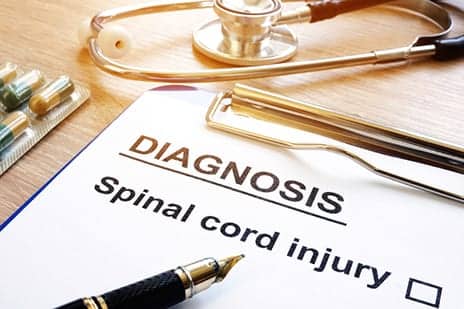Targeting liver kinase B1 (LKB1) protein in mice with spinal cord injury helped stimulate long-distance neuron regeneration, leading to gains in functional recovery, according to researchers from Lewis Katz School of Medicine at Temple University (LKSOM).
Restoring the ability to walk following spinal cord injury requires neurons in the brain to re-establish communication pathways with neurons in the spinal cord. Mature neurons, however, are unable to regenerate their axons to facilitate this process, explains a media release from Temple University Health System.
“Our investigation shows that LKB1 is critical to the control of axon regeneration in mature neurons,” says lead investigator Shuxin Li, MD, PhD, associate professor at Shriners Hospital’s Pediatric Research Center and the Department of Anatomy and Cell Biology at LKSOM.
The study was published recently in the journal Molecular Therapy.
In the study, Li’s team identified LKB1 as a potential target through their investigations of molecular pathways affected by chondroitin sulphate proteoglycans (CSPGs). CSPGs are abundant around spinal cord lesions, where a CSPG-enriched extracellular matrix forms and ultimately blocks the regrowth of axons that have been crushed or severed by injury. While LKB1 is a suspected regulator of early-stage development, its influence on adult neurons in the central nervous system has been unclear.
In mice, LKB1 protein expression in the cerebral cortex starts out relatively high and decreases with age, reaching its lowest levels in adult animals. When they added LKB1 in adeno-associated virus (AAV) vectors AAV2 and AAV9 to adult mouse neurons in cell culture, they discovered that the protein stimulated neuron growth.
The researchers then tested the effects of LKB1 in live animals with injured spinal cords. Local injection into the sensorimotor cortex induced significant axon regeneration into the lesion area. Vigorous axon regeneration was observed following systemic injection of AAV9-LKB1 after spinal cord injury.
Several weeks after treatment, mice were evaluated for changes in locomotor function. Compared to controls, both AAV2- and AAV9-treated animals exhibited significant functional gains, with improvements in coordination, movement of the hind paws, and hind paw grasping, the release explains.
“This outcome indicates that LKB1 influences neuronal growth in functionally meaningful ways in injured animals,” Li comments.
Li plans to verify the functional effects of LKB1 in other model systems, which could lead to the development of a translational model for eventual clinical research, per the release.
“We have opened a path to translational studies, since AAVs can be applied to treatments for human patients,” he says.
The latest work also builds on previous research carried out in Li’s lab on systemic treatment with peptides capable of regenerating neurons. In 2011, for example, his team found that peptides against CSPG receptor leukocyte common antigen-related phosphatase facilitates axon growth and recovery of limb movement in mice with damaged spinal cords.
“We want to investigate the combination of LKB1 with some of these other peptides, since together these molecules could be highly effective in healing neurons affected by spinal cord injury,” he concludes.
[Source(s): Temple University Health System, EurekAlert]





